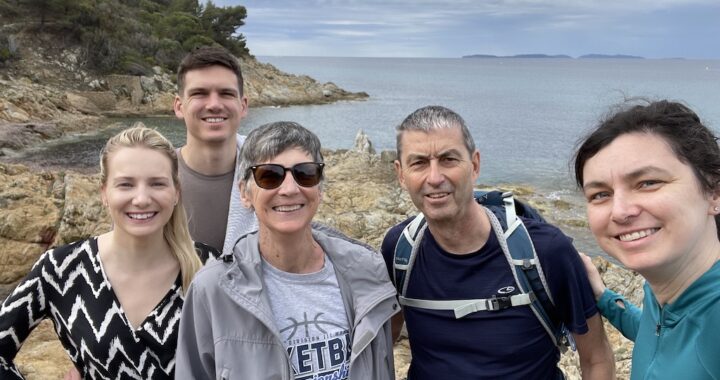 From the window of our son and daughter-in-law’s home in Warwickshire, England, I was admiring the red, brick barns and lush, green fields when suddenly a head floated past, just above their back hedge.
From the window of our son and daughter-in-law’s home in Warwickshire, England, I was admiring the red, brick barns and lush, green fields when suddenly a head floated past, just above their back hedge.
“I saw a ghost!” I screamed.
“No, that’s a real person,” Nic said. “C’mon, I’ll show you.”
Then he led us down a trail down the road from their home and we arrive at the Oxford Canal. I felt like I entered another time period. Narrow houseboats puttered along until jammed in traffic by ancient brick bridges with old fashioned locks every hundred yards.
On busy days pleasure boats floated up and down the canal. People congregated on the bridge shooting the breeze while waiting for next boat to go through the locks.
The rustic lock system, which allowed only a single boat passage, has changed little from the past  century. In the past, a boy riding a bicycle prepared or set locks ahead of a boat's arrival. Nowadays, the woman aboard, carrying the lock key, hopped off onto shore to open the gate letting the water rise or fall, while the mister stood at the stern manning the rudder bar.
century. In the past, a boy riding a bicycle prepared or set locks ahead of a boat's arrival. Nowadays, the woman aboard, carrying the lock key, hopped off onto shore to open the gate letting the water rise or fall, while the mister stood at the stern manning the rudder bar.
The Oxford Canal, inaugurated in 1769, is one of England’s oldest. In earlier days, coal and limestone were transported cross-country along canals that followed the contours of the land. In yesteryear, horses pulled supply boats by trotting alongside the canal on the shoreline’s narrow dirt paths.
Four thousand, seven hundred miles of navigable canals and rivers cross the United Kingdom; two thousand seven hundred miles of these are part of the connected system. During the Industrial  Revolution, the canals system provided a commercial transport network until the the railways prevailed.
Revolution, the canals system provided a commercial transport network until the the railways prevailed.
Narrowboats are usually built 6 feet 10 inches wide and a maximum length of 72 feet, because they must be under 7 feet wide and 75 feet long in order to fit into the lock.
Most of the old vessels, converted into houseboats, are now rented out for family holidays, but 8580 narrowboats are registered as 'permanent homes' on Britain's waterway system. Fifteen thousand Britons live their lives entirely on the water, and separate themselves from much of what defines the economy and life of the average British citizen. The boat people represent a growing alternative community living on semi-permanent moorings or continuously cruising.
 Only a sunny day, a carnival atmosphere prevails. I felt wistful watching the colorful boats parade past on the lazy canal. Whimsically, I imagined ditching real life and drifting down the canal without a care in the world.
Only a sunny day, a carnival atmosphere prevails. I felt wistful watching the colorful boats parade past on the lazy canal. Whimsically, I imagined ditching real life and drifting down the canal without a care in the world.



Oh now that would be a lot of fun! Count me in if you ever decide to rent one.
Tina, you would definitely love riding the canals and you would strike up conversation with everyone you met along the way.
I guess I didn’t realize England had enough rain to have canals like the ones you’ve described, Pat. How fascinating! Of course, if Central Illinois doesn’t get some dry weather soon, I might be tempted to find a nice boat myself. Can’t you just see the Monk helping me steer a boat down Illinois streets?!?
Oh yes,Debbie, it rains frequently in England especially this spring. And we are having record breaking rainfall and flooding in Switzerland,France and other parts of Europe. I would love to see you with Monk steering a boat down the street! Just imagining it, makes me smile.